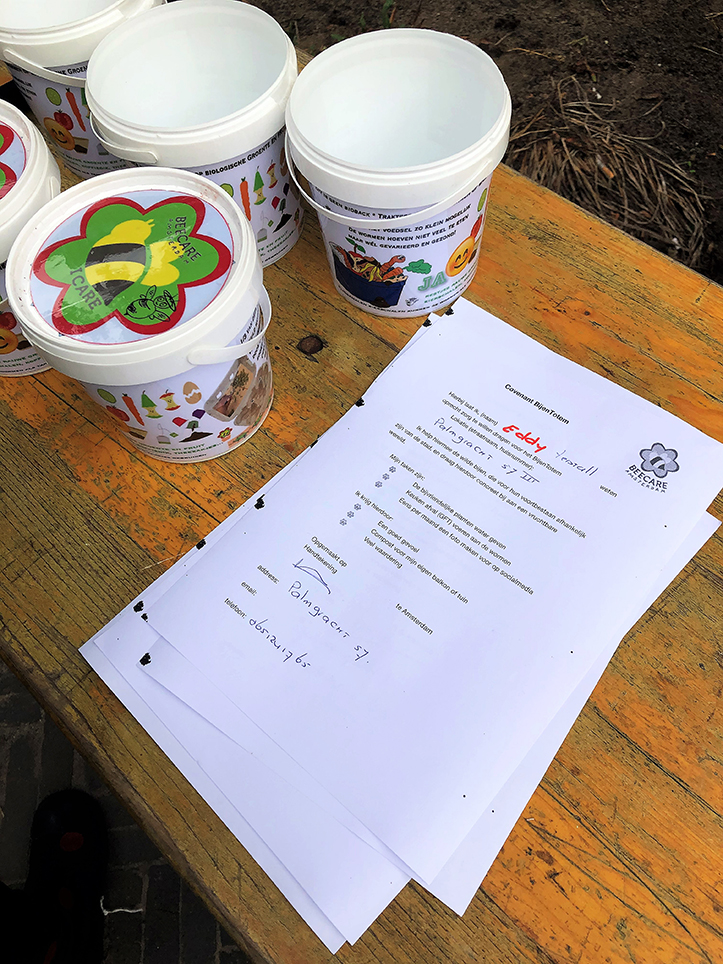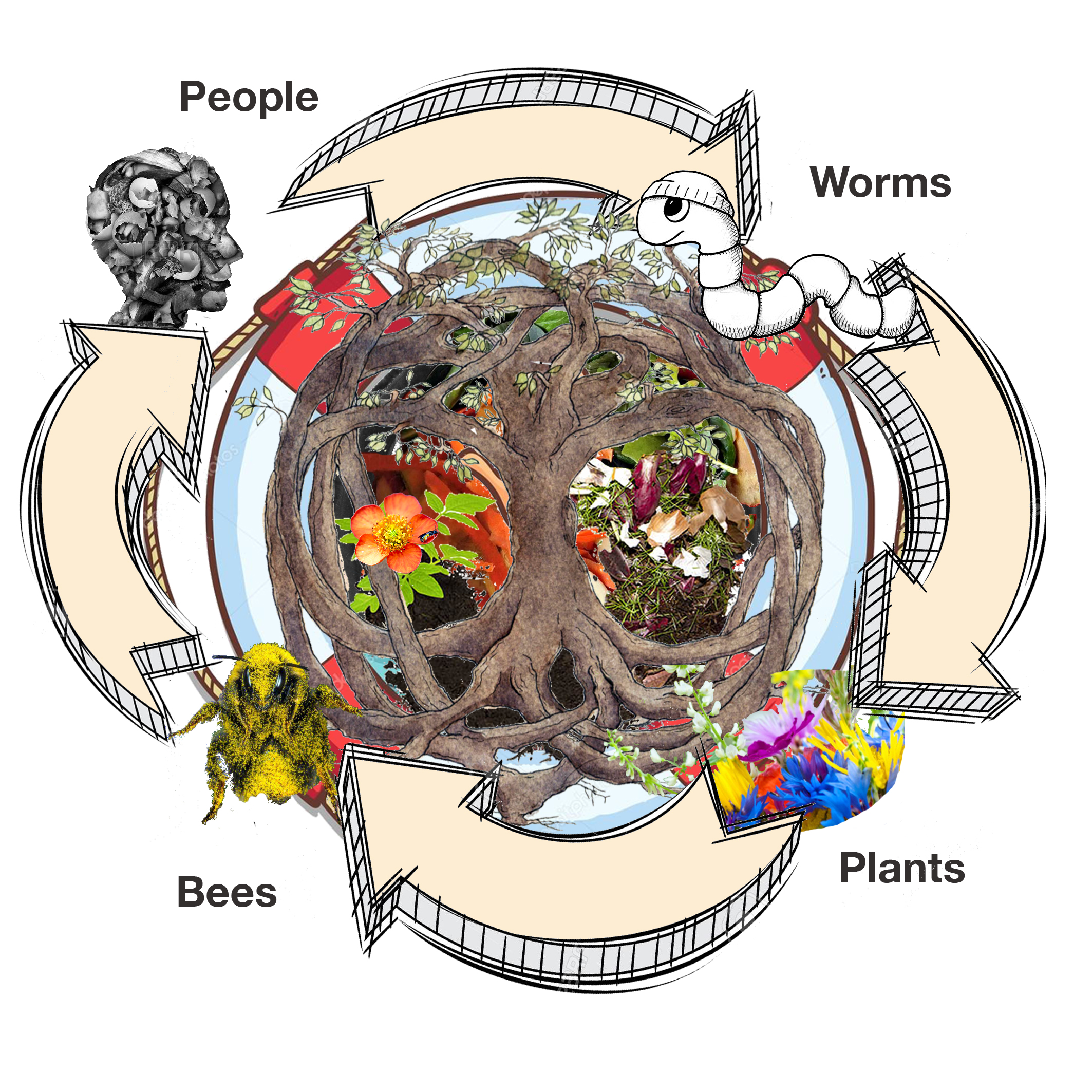BeeTotems represent living social sculptures. with organic and anorganic up-cycling qualities.
Organic circularity in the BeeTotem: a closed system for sustainability
The organic circularity in the BeeTotem encompasses the notion of establishing a self-contained system where resources, products, and materials are employed, up-cycled, and repurposed in an environmentally sustainable manner instead of being discarded as waste. This approach aligns with a regenerative resource management strategy, aiming not only to minimise waste but also to mitigate environmental repercussions while optimising resource utilisation. In a sense, it mirrors the principles of quantum physics, where nothing is truly wasted, but rather transformed and repurposed within the ecosystem of the circular economy
The role of Eisenia fetida: worms as key players in the BeeTotem
BeeTotems are generously sized at 120 centimetres in diameter. These structures function as top-tier restaurants exclusively designed for specific species of wild bees. At the core of each totem resides a tube inhabited by tiger worms, scientifically known as Eisenia fetida. These worms play a crucial role in the system by consuming organic kitchen waste, primarily vegetable leftovers. Local residents have formally committed to nurturing the BeeTotems in signing a covenant. Their dedication manifests by providing water to the plants and feeding the worms with kitchen scrapings.
‘Liquid gold’ for plants and wild bees: The effect of worm tea
As the worms venture out through the tube’s openings, they generously dispense a precious substance often referred to as ‘worm tea.’ This liquid is sometimes likened to ‘liquid gold’ due to its remarkable properties, acting as a natural insect repellent while enhancing the plant’s inherent disease suppression and resistance capabilities. What makes this elixir particularly valuable is its rich composition, boasting significant quantities of essential nutrients, including nitrogen, phosphorus, potassium, as well as magnesium and calcium. These vital nutrients are promptly assimilated by the growing plants, functioning as an exceptional natural fertiliser that fortifies their growth and overall health.
BeeTotem as a living closed-loop system: quality and resilience in the wild bee population
Consequently, these plants yield superior pollen and nectar, which they generously provide to their corresponding wild bee species. Each individual totem is meticulously dedicated to a specific wild bee, considering its distinct plant preferences. This meticulous attention to dietary quality, achieved through high-grade nectar and pollen, translates into the robust growth and resilience of the succeeding generations of vital bees. In essence, the BeeTotem stands as a dynamic, living, and interconnected circular entity.
What comes to mind is ‘What goes around, comes around’ and ‘You are what you eat’.
Image: On the left, buckets where kitchen waste for the worms can be collected, and on the right, a signed covenant.


